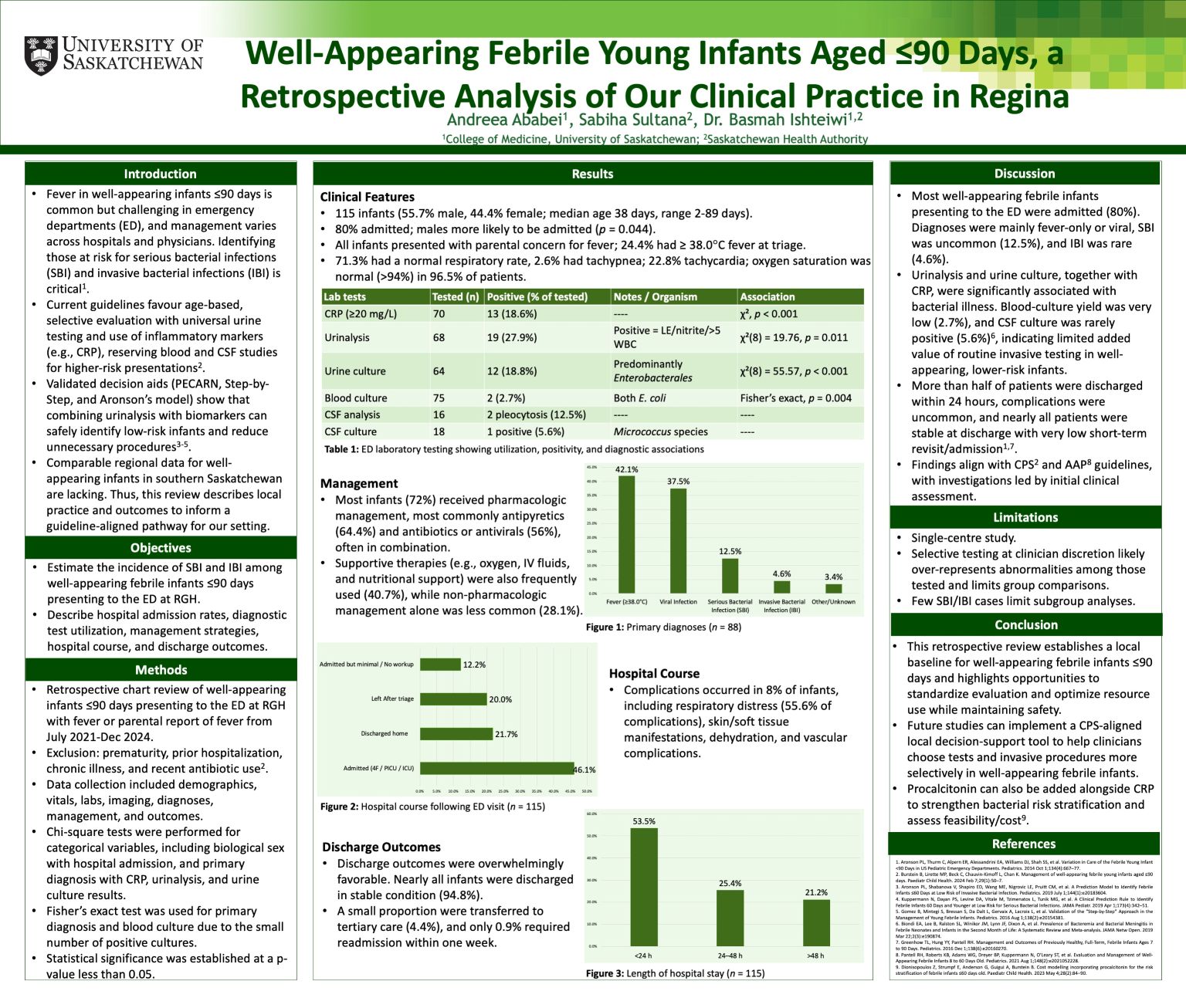
Well-appearing febrile young infants aged 90 days, a retrospective analysis of our clinical practice in Regina
Andreea Ababei
Management of well-appearing febrile infants varies across emergency departments. This retrospective chart review described local practices and estimated the incidence of serious (SBI) and invasive bacterial infections (IBI) among infants ≤90 days presenting to the Regina General Hospital (RGH) Emergency Department (ED) with reported fever from July 2021 to December 2024. Descriptive statistics summarized patient characteristics; Chi-squared and Fisher tests examined associations between primary diagnosis and CRP, urinalysis, urine culture, and blood culture. Of 115 infants (median 38 days; 55.7% male), 80% were admitted. Among the 88 with a recorded diagnosis, fever-only (42.1%) and viral illnesses (37.5%) predominated; SBI occurred in 12.5% and IBI in 4.6%. CRP ≥20 mg/L occurred in 18.6% and was associated with SBI/IBI (p < 0.001). Urinalysis was positive in 27.9% and urine culture in 18.8%, both associated with SBI (p = 0.011; p < 0.001). Blood cultures were positive in 2.7% (E. coli; Fisher p = 0.004). CSF pleocytosis in 12.5% and CSF culture positive in 5.6% (Micrococcus). Length of stay was short (53.5% ≤24 h), complications were uncommon (8%), and 94.8% were stable at discharge. These
results support a guideline-aligned evaluation and provide a provincial baseline to guide implementation and quality improvement.
